Study on a High-Boron-Content Stainless Steel Composite for Nuclear Radiation
Abstract
:1. Introduction
2. Materials and Methods
2.1. Theoretical Method
2.2. Material Design
2.2.1. Optimized Design Method
2.2.2. Shielding Property Calculation Model
2.3. Material Sample Manufacture
3. Neutron and γ Rays Transmission Measurements
3.1. Neutron Transmission Measurement
3.1.1. Neutron Source Parameter
3.1.2. Neutron Experiment Layout
3.2. Rays Transmission Measurement
3.2.1. γ Rays Source Parameter
3.2.2. γ Rays Experiments Layout
4. Results and Discussion
4.1. Material Optimization Design Results
4.2. Neutron Transmission Experiment Results
4.3. γ Rays Transmission Experiment Results
5. Conclusions
Author Contributions
Funding
Institutional Review Board Statement
Informed Consent Statement
Data Availability Statement
Conflicts of Interest
References
- Soliman, S.; Youchison, D.; Baratta, A.; Balliett, T. Neutron effects on borated stainless steel. Nucl. Technol. 1991, 96, 346–352. [Google Scholar] [CrossRef]
- Robino, C.; Cieslak, M. High-temperature metallurgy of advanced borated stainless steels. Metall. Mater. Trans. A 1995, 26, 1673–1685. [Google Scholar] [CrossRef]
- Rodrigues, A.; Filho, T.M.; Filho, W.R. Borated stainless steel storage project to the spent fuel of the IEA-R1 reactor. In Proceedings of the INAC 2013 Recife, Recife, Brazil, 24–29 November 2013. [Google Scholar]
- Lister, T.E.; Mizia, R.E.; Erickson, A.W.; Matteson, B.S. General and Localized Corrosion of Borated Stainless Steels. In Office of Scientific & Technical Information Technical Reports; Idaho National Laboratory: Idaho Falls, ID, USA, 2008. [Google Scholar]
- Dilip, J.J.S.; Ram, G.D.J. Microstructures and Properties of Friction Freeform Fabricated Borated Stainless Steel. J. Mater. Eng. Perform. 2013, 22, 3034–3042. [Google Scholar] [CrossRef]
- He, J.Y.; Soliman, S.E.; Baratta, A.J.; Balliett, T.A. Fracture Mechanism of Borated Stainless Steel. Nucl. Technol. 2000, 130, 218–225. [Google Scholar] [CrossRef]
- He, X.; Ahn, T.; Sippel, T. Corrosion of Borated Stainless Steel in Water and Humid Air. In Proceedings of the CORROSION 2012, Salt Lake City, UT, USA, 11–15 March 2012. [Google Scholar]
- Won, C.H.; Jang, J.H.; Kim, S.D.; Moon, J.; Ha, H.Y.; Kang, J.Y.; Lee, C.-H.; Lee, T.-H.; Kang, N. Effect of annealing on mechanical properties and microstructure evolution of borated stain-less steels. J. Nucl. Mater. 2019, 515, 206–214. [Google Scholar] [CrossRef]
- Fu, X.; Ji, Z.; Lin, W.; Yu, Y.; Wu, T. The Advancement of Neutron Shielding Materials for the Storage of Spent Nuclear Fuel. Sci. Technol. Nucl. Install. 2021, 2021, 5541047. [Google Scholar] [CrossRef]
- ASTM. A887-Standard Specification for Borated Stainless Steel Plate, Sheet, and Strip for Nuclear Application; ASTM International: West Conshohocken, PA, USA, 2020. [Google Scholar]
- Loria, E.A.; Isaacs, H.S. Type 304 Stainless Steel With 0.5% Boron for Storage of Spent Nuclear Fuel. JOM 1980, 32, 10–17. [Google Scholar] [CrossRef]
- Yang, Q.; Yu, B.; Hu, H.-S.; Hu, G.; Miao, Z.; Wei, Y.; Sun, W. Melt flow and solidification during infiltration in making steel matrix syntactic foams. Mater. Sci. Technol. 2019, 35, 1831–1839. [Google Scholar] [CrossRef]
- Hu, H.-S.; Wang, Q.; Qin, J.; Wu, Y.; Zhang, T.; Xie, Z.; Jiang, X.; Zhang, G.; Xu, H.; Zheng, X.; et al. Study on Composite Material for Shielding Mixed Neutron and -Rays. IEEE Trans. Nucl. Sci. 2008, 55, 2376–2384. [Google Scholar] [CrossRef]
- Hu, G.; Hu, H.-S.; Yang, Q.; Yu, B.; Sun, W.-Q. Study on the design and experimental verification of multilayer radiation shield against mixed neutrons and γ-rays. Nucl. Eng. Technol. 2020, 52, 178–184. [Google Scholar] [CrossRef]
- Thomas, E.B.; John, T.G.; Avneet, S. MCNP—A General Monte Carlo N-Particle Transport Code, Version 5; LA-UR-03-1987; Los Alamos National Laboratory: Los Alamos, NM, USA, 2003.
- Kaur, P.; Singh, D.; Singh, T. Heavy metal oxide glasses as gamma rays shielding material. Nucl. Eng. Des. 2016, 307, 364–376. [Google Scholar] [CrossRef]
- Tittle, C.W. Theory of neutron logging I. Geophysics 1961, 26, 27–39. [Google Scholar] [CrossRef]
- Hubbell, J.H.; Seltzer, S.M. Tables of X-Ray Mass Attenuation Coefficients and Mass Energy-Absorption Coefficients 1 keV to 20 MeV for Elements Z = 1 to 92 and 48 Additional Substances of Dosimetric Interest. Available online: https://www.nist.gov/pml/x-ray-mass-attenuation-coefficients (accessed on 13 June 2021).
- Evaluated Nuclear Data File. ENDF/B-VIII.0 Released February 2, 2018. Available online: https://www.nndc.bnl.gov/exfor/endf00.jsp (accessed on 25 July 2021).
- Le, T.N.; Hoang, S.M.T.; Nguyen, Q.N.; Tran, H.N. Evaluation of the calibration factors of neutron dose rate meters in a 241Am–Be neutron field. Nucl. Sci. Tech. 2019, 30, 133. [Google Scholar] [CrossRef]
- JJG 852-2006. Verification Regulation of Neutron Ambient Dose Equivalent (Rate) Meters; General Administration of Quality Supervision, Inspection and Quarantine of the People’s Republic of China: Beijing, China, 2007.
- Sun, W.; Hu, H.; Yu, B.; Sheng, L.; Hu, G.; Cai, Y.; Yang, Q.; Zhang, M.; Yan, Y. Random model for radiation shielding calculation of particle reinforced metal matrix composites and its application. Appl. Radiat. Isot. 2020, 166, 109299. [Google Scholar] [CrossRef] [PubMed]
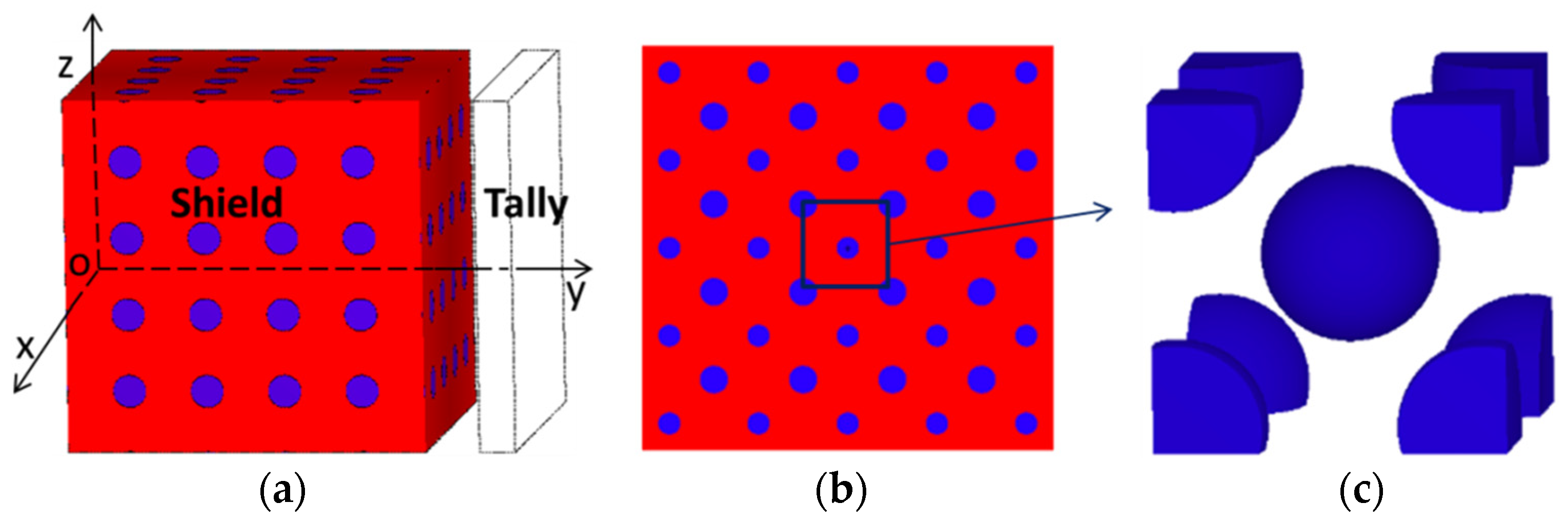
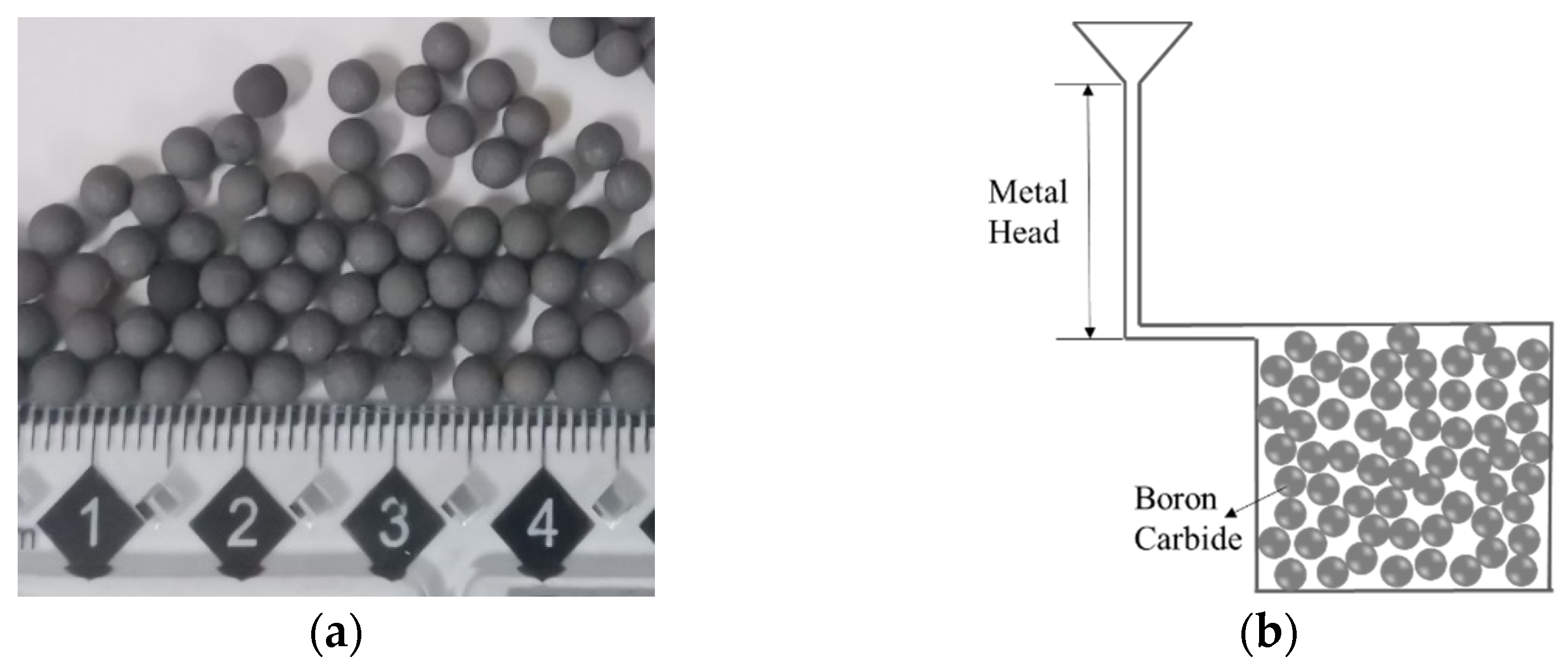
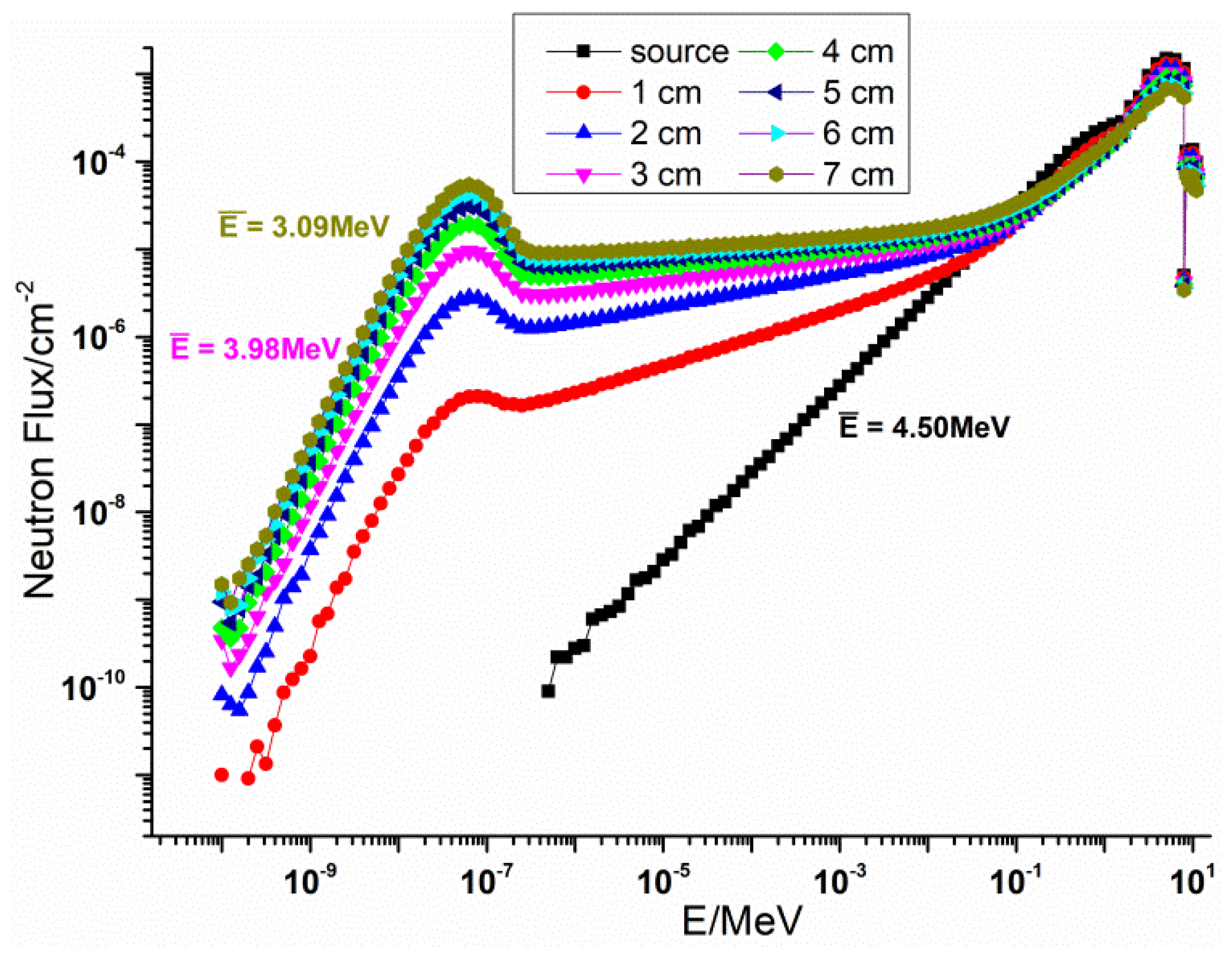
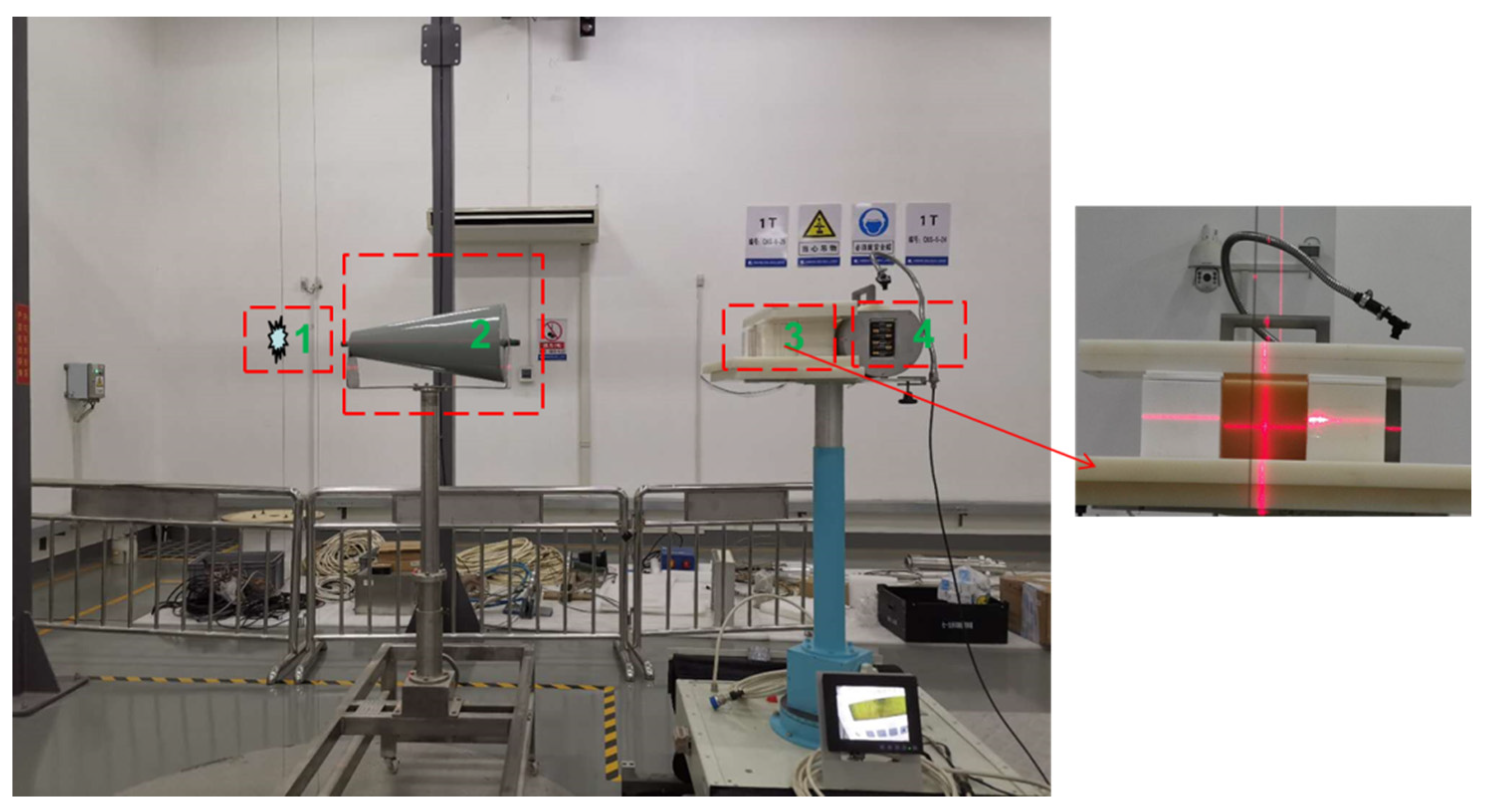
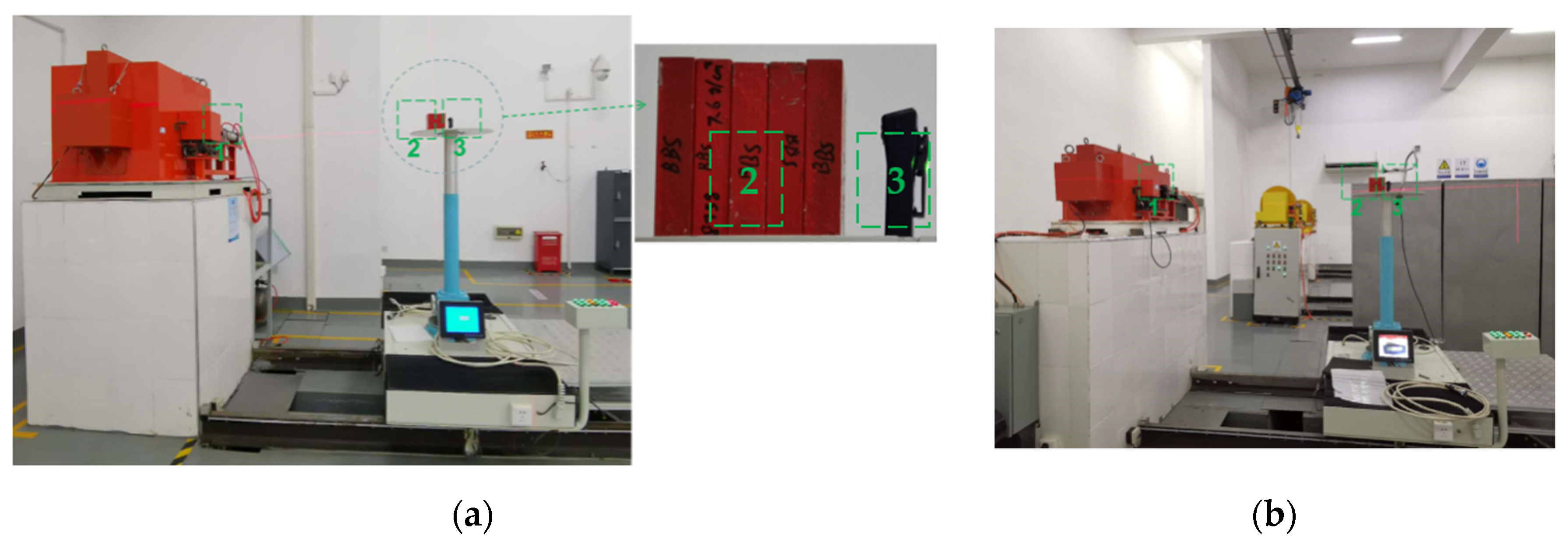
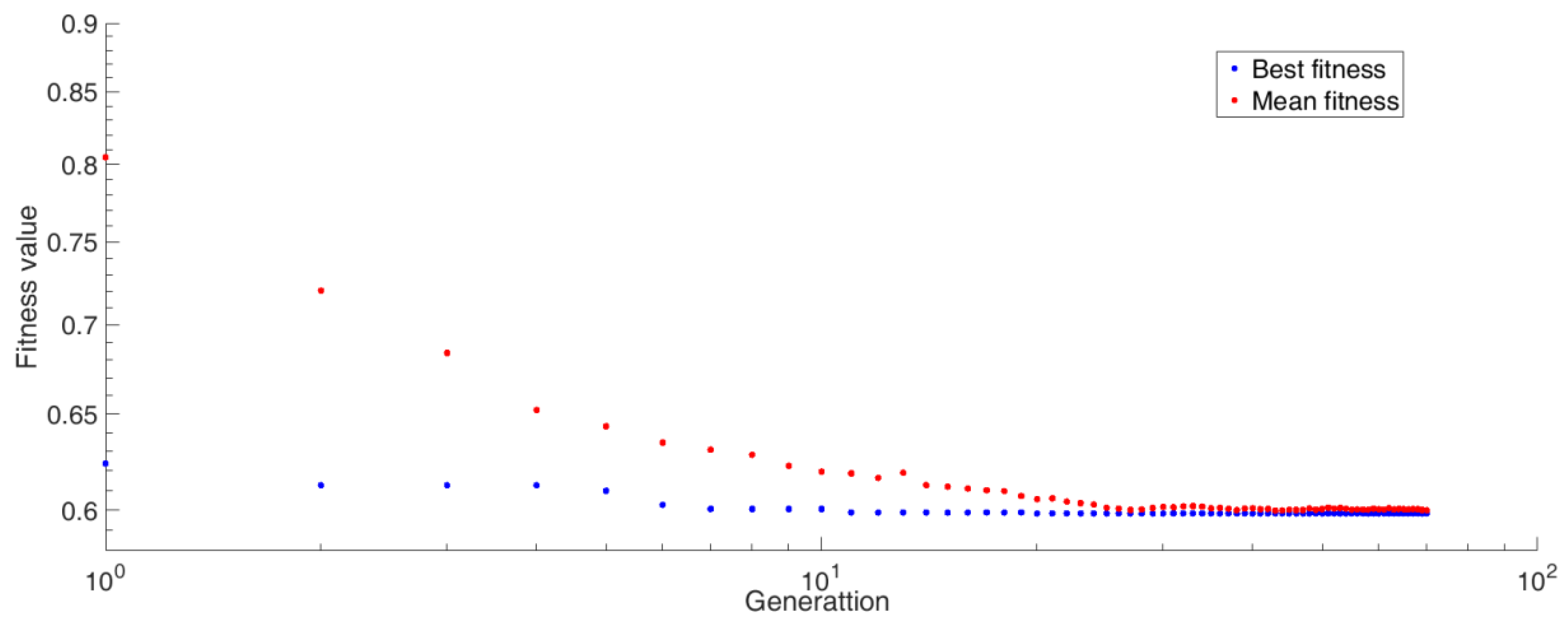
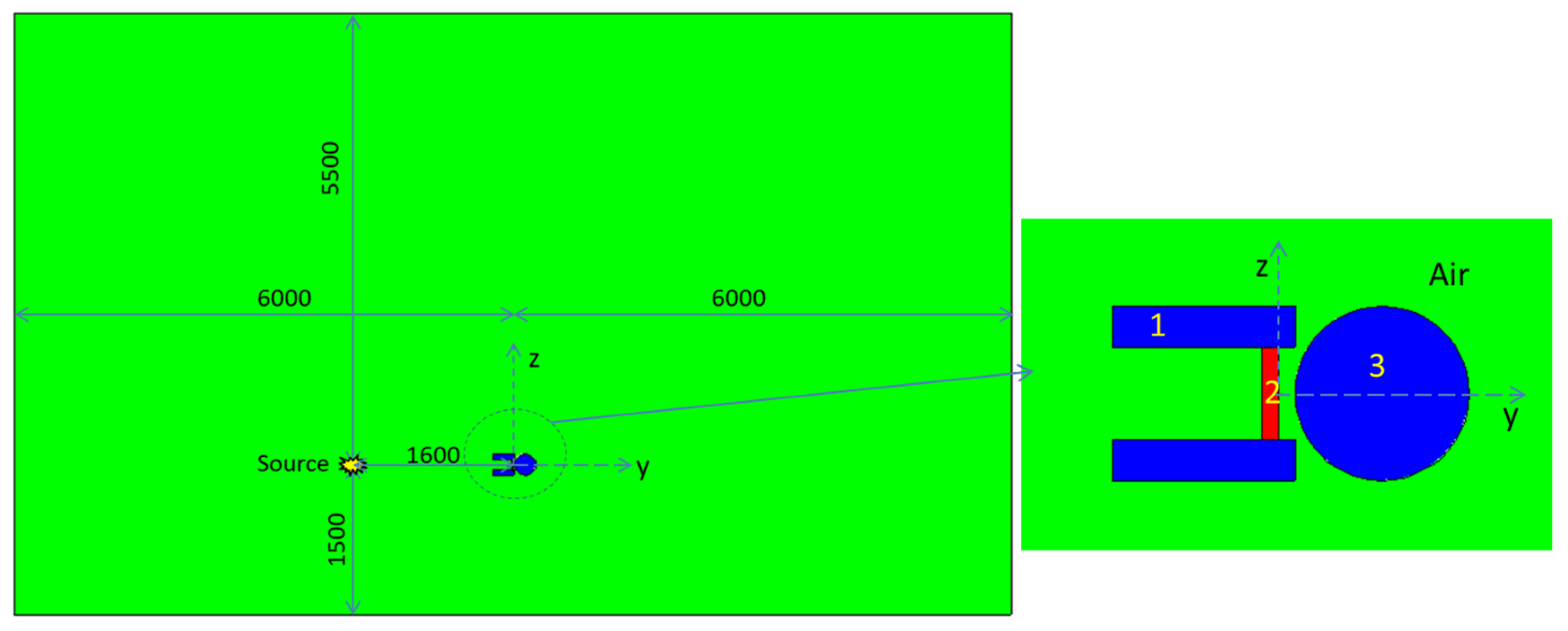

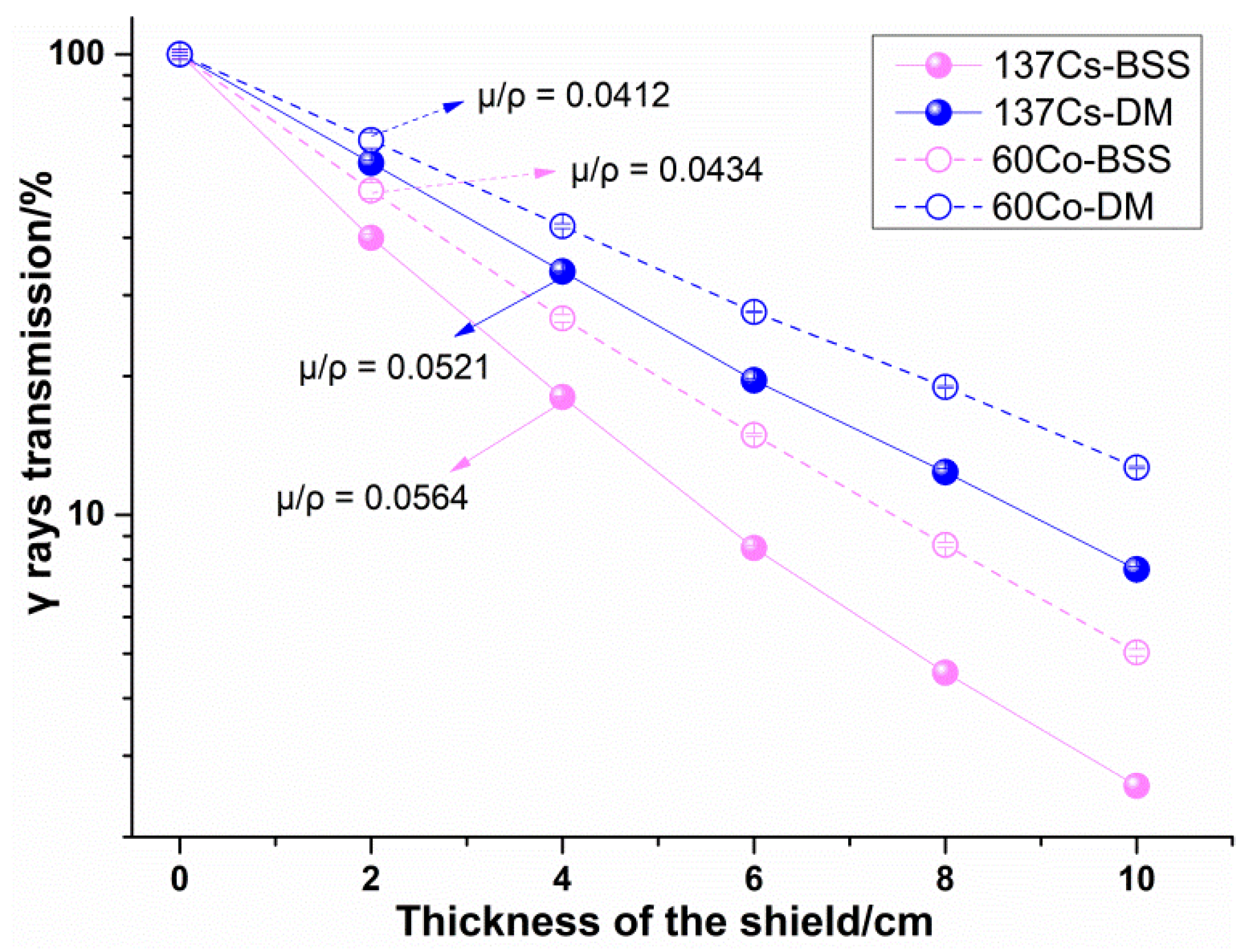
| Energy (MeV) | Element | ||
|---|---|---|---|
| Fe | C | B | |
| 1 × 10−3 | 7.150 × 104 | 3.980 × 103 | 2.864 × 103 |
| 5 × 10−3 | 1.100 × 103 | 3.442 × 101 | 2.256 × 101 |
| 1 × 10−2 | 1.343 × 103 | 4.271 | 2.924 |
| 0.5 | 6.622 × 10−1 | 1.569 × 10−1 | 1.879 × 10−1 |
| 2.0 | 3.357 × 10−1 | 7.996 × 10−2 | 9.572 × 10−2 |
| 10 | 2.356 × 10−1 | 3.526 × 10−2 | 4.089 × 10−2 |
| Energy (MeV) | Nuclide | ||
|---|---|---|---|
| 56Fe | 12C | 10B | |
| 2.53 × 10−8 | 1.35 | 0.45 | 539.84 |
| 5 × 10−5 | 0.97 | 0.43 | 12.40 |
| 5 × 10−2 | 0.33 | 0.41 | 0.72 |
| Fission (average: 1.98) | 0.23 | 0.15 | 0.31 |
| 2.45 | 0.28 | 0.14 | 0.29 |
| 14.1 | 0.22 | 0.12 | 0.22 |
| Source | Source Activity/Bq | |
|---|---|---|
| 60Co | 1.25 (Average) | 1.38 × 1013 |
| 137Cs | 0.662 | 2.73 × 1012 |
| Weight Factors | Optimization Parameters | |||
|---|---|---|---|---|
| B4C Mass Fraction/% | Radius/mm | Density | Total Dose Equivalent Behind the Shield for One Fission/Sv | |
| = 0.8 | 24.68 | 1.53 | 5.17 | 1.05 × 10–13 |
| = 0.2 | 23.97 | 1.728 | 5.23 | 1.01 × 10–13 |
| Compared materials | 1 | 1.53 | 7.72 | 1.76 × 10–13 |
| 5 | 1.53 | 7.12 | 1.49 × 10–13 | |
| 10 | 1.53 | 6.50 | 1.34 × 10–13 | |
| 20 | 1.53 | 5.53 | 1.11 × 10–13 | |
| 24.68 | 1.00 | 5.17 | 1.05 × 10–13 | |
| 2.00 | 5.17 | 1.06 × 10–13 | ||
| 25 | 1.53 | 5.14 | 1.10 × 10–13 | |
| Material | BSS | DM | |
|---|---|---|---|
| Density/ | 7.6 | 5.21 | |
| Linear attenuation coefficient/ | 60Co | 0.3300 | 0.2147 |
| 137Cs | 0.4283 | 0.2716 | |
| Mass attenuation coefficient/ | 60Co | 0.0434 | 0.0412 |
| 137Cs | 0.0564 | 0.0521 | |
Publisher’s Note: MDPI stays neutral with regard to jurisdictional claims in published maps and institutional affiliations. |
© 2021 by the authors. Licensee MDPI, Basel, Switzerland. This article is an open access article distributed under the terms and conditions of the Creative Commons Attribution (CC BY) license (https://creativecommons.org/licenses/by/4.0/).
Share and Cite
Sun, W.-Q.; Hu, G.; Yu, X.-H.; Shi, J.; Xu, H.; Wu, R.-J.; He, C.; Yi, Q.; Hu, H.-S. Study on a High-Boron-Content Stainless Steel Composite for Nuclear Radiation. Materials 2021, 14, 7004. https://doi.org/10.3390/ma14227004
Sun W-Q, Hu G, Yu X-H, Shi J, Xu H, Wu R-J, He C, Yi Q, Hu H-S. Study on a High-Boron-Content Stainless Steel Composite for Nuclear Radiation. Materials. 2021; 14(22):7004. https://doi.org/10.3390/ma14227004
Chicago/Turabian StyleSun, Wei-Qiang, Guang Hu, Xiao-Hang Yu, Jian Shi, Hu Xu, Rong-Jun Wu, Chao He, Qiang Yi, and Hua-Si Hu. 2021. "Study on a High-Boron-Content Stainless Steel Composite for Nuclear Radiation" Materials 14, no. 22: 7004. https://doi.org/10.3390/ma14227004
APA StyleSun, W.-Q., Hu, G., Yu, X.-H., Shi, J., Xu, H., Wu, R.-J., He, C., Yi, Q., & Hu, H.-S. (2021). Study on a High-Boron-Content Stainless Steel Composite for Nuclear Radiation. Materials, 14(22), 7004. https://doi.org/10.3390/ma14227004





